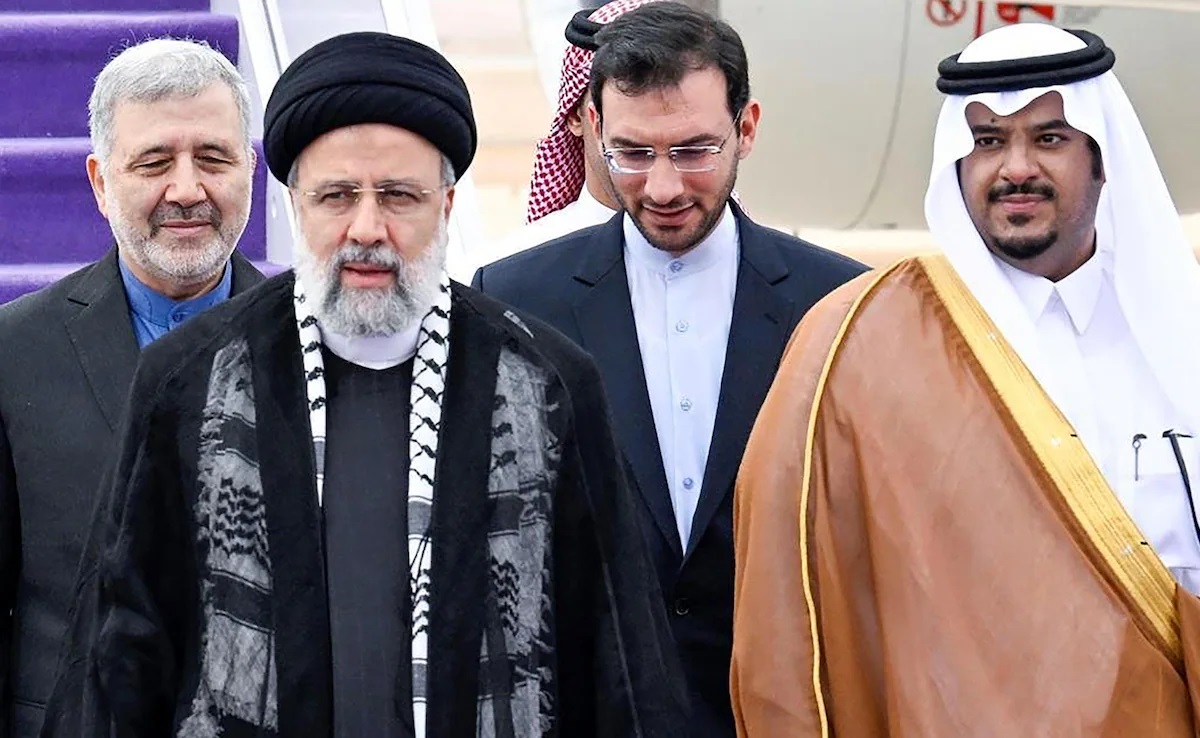
Arab culture is rich, diverse, and steeped in history, offering a tapestry of traditions, customs, and art forms that have captivated people around the world for centuries. From the enchanting melodies of traditional music to the intricate designs of Islamic architecture, the Arab world is a treasure trove of fascinating facts and cultural marvels. In this article, we’ll delve into 10 captivating Arab fun facts that showcase the vibrancy and depth of this remarkable culture. Whether you’re an avid traveler, a history enthusiast, or simply curious about the world, these insights will unveil the allure and beauty of Arab heritage in an engaging and informative manner.
Key Takeaways:
- Arabic culture has made significant contributions to the world, from language and literature to music and cuisine, shaping global culture and influencing art and traditions.
- The Arab world is home to breathtaking landscapes, ancient cities, and rich traditions, offering a diverse and vibrant cultural experience for visitors and enthusiasts alike.
Arabic is one of the most widely spoken languages in the world.
Arabic is the official language of 22 countries and is spoken by more than 422 million people worldwide. It is also one of the six official languages of the United Nations. The language has a rich history and is known for its beautiful calligraphy and lyrical poetry.
The Arabian Peninsula is home to the world’s largest continuous sand desert, the Rub’ al Khali.
The Rub’ al Khali, also known as the Empty Quarter, covers an area of about 650,000 square kilometers, encompassing parts of Saudi Arabia, Oman, the United Arab Emirates, and Yemen. This vast desert is renowned for its towering dunes, extreme temperatures, and stunning, untouched landscapes.
The Arab world is the birthplace of coffee.
Coffee, known as “qahwa” in Arabic, has its origins in the Arab world. The practice of roasting and brewing coffee beans began in the Middle East, and coffeehouses, known as “qahveh khaneh,” became popular social hubs for intellectual discussions and gatherings.
Arabic literature dates back to ancient times.
Arabic literature has a rich and diverse history that spans thousands of years. From epic poetry and captivating folk tales to groundbreaking modern novels and poetry, Arabic literature has made significant contributions to world culture and continues to influence writers and readers globally.
Arabic music is renowned for its intricate rhythms and captivating melodies.
Arabic music is characterized by its complex rhythms, mesmerizing melodies, and diverse instruments such as the oud, qanun, and darbuka. From traditional folk music to contemporary pop and classical compositions, Arabic music showcases a wide range of styles and influences.
The Arab world has a rich tradition of storytelling through the art of oral history.
Storytelling has been an integral part of Arab culture for centuries, with tales passed down through generations. The art of oral history has preserved folklore, legends, and moral teachings, contributing to the rich tapestry of Arab heritage and identity.
The ancient city of Petra in Jordan is a UNESCO World Heritage Site.
Petra, known as the “Rose City,” is a breathtaking archaeological site located in southern Jordan. Carved into vibrant red sandstone cliffs, the city features stunning rock-cut architecture and intricate tombs, earning its status as a UNESCO World Heritage Site and a symbol of Jordanian history and culture.
Arabic calligraphy is a revered art form.
Arabic calligraphy is a visual expression of the beauty and elegance of the Arabic language. With its intricate designs and flowing script, Arabic calligraphy is used to adorn mosques, manuscripts, and artwork, serving as a powerful symbol of cultural identity and artistic excellence.
The Arab world has a rich tradition of hospitality and generosity.
Hospitality is a deeply ingrained value in Arab culture, with guests being warmly welcomed and honored. From serving aromatic coffee and dates to elaborate feasts and gatherings, the spirit of hospitality reflects the warmth and generosity of the Arab people.
Arabic cuisine offers a diverse and flavorful culinary experience.
Arabic cuisine is celebrated for its rich flavors, aromatic spices, and diverse dishes. From savory kebabs and fragrant rice pilafs to indulgent desserts like baklava and knafeh, Arabic cuisine delights the senses and reflects the region’s vibrant culinary heritage.
Conclusion
These 10 Arab fun facts shed light on the rich and diverse culture of the Arab world. From the fascinating history and traditions to the vibrant arts and literature, the Arab world is a treasure trove of heritage and creativity. Whether it’s the mesmerizing calligraphy, the rhythmic beats of traditional music, or the mouthwatering flavors of Arab cuisine, there is something for everyone to appreciate and enjoy. Exploring these fun facts about the Arab world not only broadens our knowledge but also fosters a deeper understanding and appreciation for this vibrant and dynamic culture. Embracing the beauty of Arab traditions and embracing the warmth of Arab hospitality, these fun facts invite us to celebrate the richness of the Arab world.
FAQs
What are some traditional art forms from the Arab world?
Traditional art forms from the Arab world include calligraphy, geometric patterns, mosaics, and intricate architectural designs, reflecting the region’s rich cultural heritage.
What are some popular Arab musical instruments?
Popular Arab musical instruments include the oud, qanun, darbuka, and ney, each contributing to the mesmerizing and diverse sounds of Arab music.
How does Arab cuisine differ from other cuisines?
Arab cuisine is known for its use of aromatic spices, such as cumin, coriander, and saffron, as well as its emphasis on communal dining and the sharing of flavorful dishes.
What are some famous landmarks in the Arab world?
Famous landmarks in the Arab world include the Pyramids of Giza in Egypt, the Petra archaeological site in Jordan, and the Burj Khalifa in Dubai, showcasing the region’s rich history and architectural marvels.
How does Arab literature contribute to global literary traditions?
Arab literature, including works by renowned poets and writers, has made significant contributions to global literary traditions, with themes ranging from love and nature to philosophical reflections and societal critiques.
Was this page helpful?
Our commitment to delivering trustworthy and engaging content is at the heart of what we do. Each fact on our site is contributed by real users like you, bringing a wealth of diverse insights and information. To ensure the highest standards of accuracy and reliability, our dedicated editors meticulously review each submission. This process guarantees that the facts we share are not only fascinating but also credible. Trust in our commitment to quality and authenticity as you explore and learn with us.


